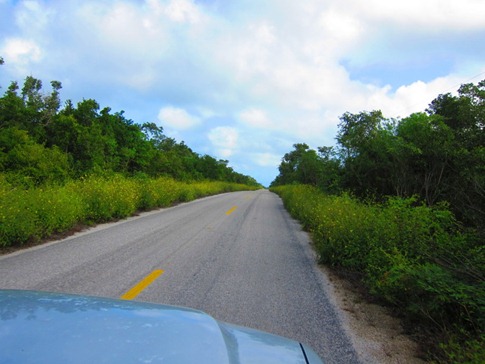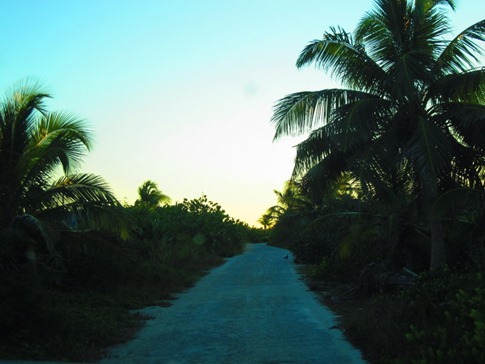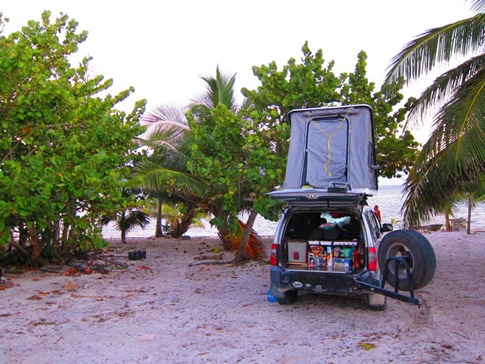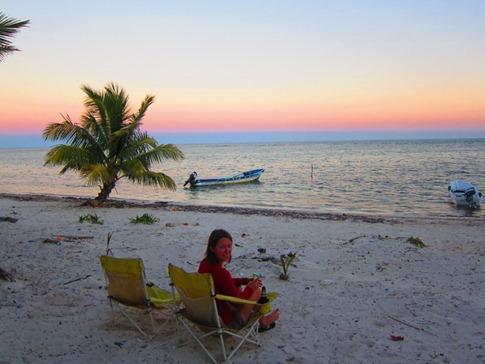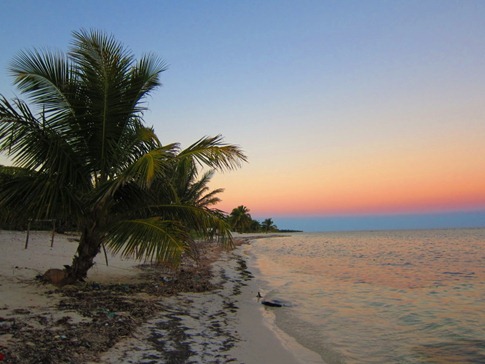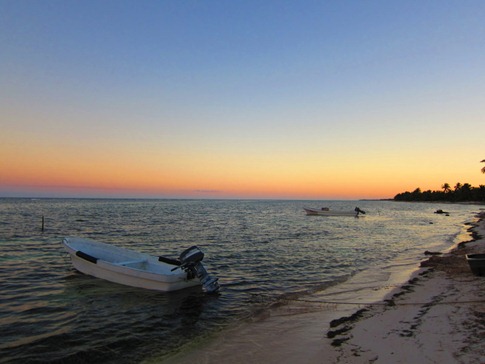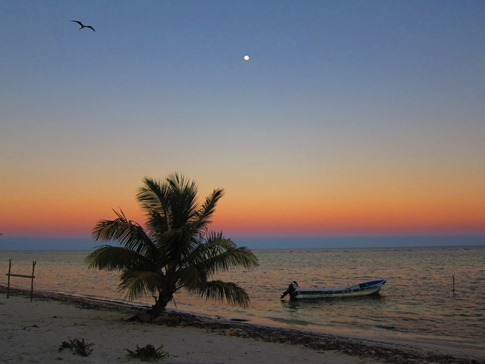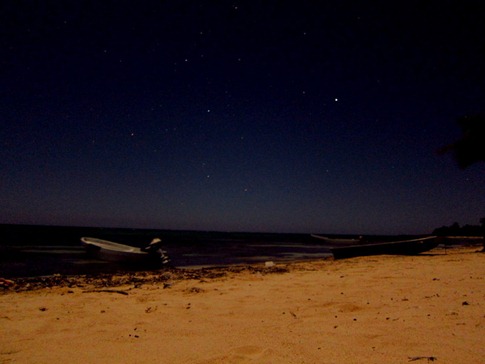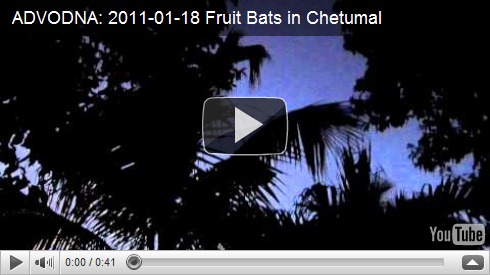We’d considered continuing into Sian Ka’an to drive the potholed road all the way out to Punta Allen for a few days of camping on the beach but decided instead to head south for the Costa Maya. Just four miles from Ambergris Caye in Belize, Xcalak is a tiny fishing village at the end of a peninsula that extends south from the cruise ship port of Majahual. Apparently, the town of Majahual was completely destroyed by a hurricane recently and was purpose-rebuilt to cater to the disembarking hoards with more gift and knick-knack shops than one might think possible. Driving the road that runs dead straight 70km from the main highway across to Majahual on the coast through nothing but uninhabited wetlands, it’s hard to comprehend how this town ever became a regular port of call for cruise ships, except possibly for the same reason we were heading there: completely empty stretches of Caribbean beaches with white sand and blue water.
Just before Majahual, we took the paved inland road south through the wetlands. Almost immediately, we suspected that not only was this road a new experience for the wildlife, but the pavement-matching color of the silver Xterra made the dangers of the road even less apparent. The first strike was head on as we heard the thump on the windshield and saw a puff of feathers float down from the roof tent. We felt terrible and slowed down, keeping a watchful eye on the road in front of us. Then a smack on the driver’s side door; The next one had just run right into the side of us! For the remainder of the drive, birds the size of ducks, long necked with reddish brown bodies would play chicken with us, flapping madly across our path at speeds so slow it was a wonder they stayed aloft. We’d hit the brakes and cheer them on until they reached safety.
The spot mentioned in the camping book in front of a beachfront restaurant in Xcalak was no more than a parking lot next to a 5 foot wide beach lined with pangas; 15 foot, white, pen-deck fishing boats with outboard motors. We decided instead to try another spot half-way back up the coast, identified in the book only by “a barbed wire fence” and GPS coordinates. Finding neither to be quite specific enough as we patrolled the dirt coastal road in the fading light, we asked a lone fisherman sitting by a fire under a palapa where we could camp, and he pointed us to a gate in the fence. Despite my attempts to explain that our “casa de acampamiento” was on the roof, he insisted on getting a palm frond to rake the sand for a good place for us to sleep.
It turned out the fisherman was building a house on the property for a woman who lived in Cancun and didn’t seem to mind having some people around. We sat for a while and watched an idyllic sunset before cooking dinner and settling into the tent for the night.
The full moon on the white sand of the beach made the night air glow like we were camped next to a neon Kentucky Fried Chicken sign. It turned out we had more than I’d thought in common with the cruise ship crowd up in Majahual; Only in our case the midnight buffet was for the sandflies and we were the main course.
We backtracked up the peninsula and across the wetlands to the main road so we could head south to Chetumal, just north of the Belize border. We found the Yax-Ha Resort, hailed by the C & C Mexican Camping book as one of the best in Mexico, hung our hammock under the palapa and connected to the wireless to catch up with friends and family, including my mom who had undergone back surgery a few days before. I also got a chance to check in on a few projects I’ve been managing back home for some local music festivals.
After a dip in the cool pool at sunset, we watched bats chaotically swerving and diving as they feasted on a fruit that had dropped from the trees. Not exactly graceful in the air, they’d spot a piece of fruit half their size in the grass, land on it with a thump and struggle like a pterodactyl in a tar pit to take off with the whole thing in their mouths. If they got it into the air, they’d inevitably lose their grip and send the remainders crashing down through the trees around us. As we walked across the open areas, we’d make a “ping!” sound like a submarine, hoping on some level their radar-guided flight would register it and steer them safely around us.
That night, we did an almost full repack of the truck from tossing a few things that had just been getting in the way to burying the Mexico book and digging out the maps for Central America. We explained to a guy in an RV who, it turned out had been living in Belize for the past few years, that we wanted everything to look organized and neat in the truck to present the right image at the border. Having crossed several times without incident, he just shrugged and said, “Okay.”

